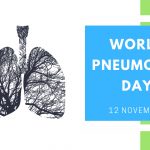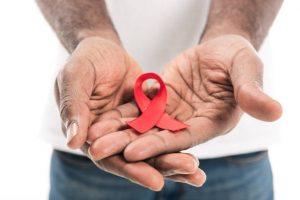World Pneumonia Day is commemorated annually on 12 November, to raise awareness about pneumonia, which was the second most prevalent killer of children under the age of five years together with influenza in South Africa in 2016. Studies have shown that HIV-infected and HIV-exposed uninfected children have a higher risk of severe pneumonia and death compared to HIV-uninfected children.
What is Pneumonia
Pneumonia is an infectious respiratory disease affecting the lungs, wherein the lungs (alveoli) are filled with pus and fluid, causing difficulty in breathing due to limited intake of oxygen.
The disease is caused by viruses, bacteria and fungi, which can spread through airborne droplets from a cough or a sneeze. The disease is common in low income and developing regions, mostly in South Asia and sub-Saharan Africa. The common causes of pneumonia among children are Streptococcus pneumoniae, Haemophilus influenzae, respiratory syncytial virus (RSV) and Pneumocystis jirovecii.
Advances made in fighting Pneumonia
While advances and great strides have been made to fight pneumonia, nevertheless many children still die as a result of pneumonia across the globe, claiming over one million lives every year according to the World Health Organization.
Children whose immune systems are compromised due to malnutrition or undernutrition are at higher risk of developing pneumonia. Pre-existing illnesses such as HIV infection and measles also increase a child’s risk of contracting pneumonia. Also, indoor air pollution caused by cooking and heating with biomass (such as wood or cow dung), living in crowded homes and parental smoking are some of the additional contributing factors for a child’s susceptibility to pneumonia.
Vaccine candidates for the respiratory syncytial virus (RSV), responsible for a significant proportion of childhood pneumonia burden, are in the late stages of development. Novel vaccines strategies are being investigated, such as maternal immunisation in which pregnant women are vaccinated in their third trimester of pregnancy to protect their infants during their first few months of life when they are at their most vulnerable.
Continuing advances are being made to facilitate accurate and rapid diagnosis of pneumonia including improved radiological methods, point-of-care tests and the use of host biomarkers that examine the host immune response to distinguish bacterial and viral infections.
The role of research
The National Institute for Communicable Diseases has been ensuring that proper diagnosis is made by testing samples to identify the infection that caused pneumonia, conducts surveillance for the different infections that cause pneumonia, monitors vaccine-preventable causes of pneumonia; and provides data to assist policymakers in making decisions about which interventions to prioritise and for which risk groups.
Immunisation against pneumococcus, measles, whooping cough and Haemophilus influenzae type B can prevent cases of pneumonia from occurring. The vaccines, coupled with adequate nutrition including exclusive breastfeeding during the first six months of life, will help ensure a well- functioning immune system and reduce the risk of pneumonia to children.
Current levels of awareness and attention do not match the level or the magnitude of the problem. By increasing awareness, making proven solutions (like vaccines) widely available and accessible to everyone who needs them, and ensuring progress towards the UNICEF Sustainable Development Goal (SDG3) of reducing under-5 mortality to <25 per 1000 live births by 2030, lives of children can be saved.
The NICD has released a series of podcasts available on three languages, English, Afrikaans and isiXhosa, and in addition, an English audio bite is attached above. To listen to the three podcasts, click on the links below:





